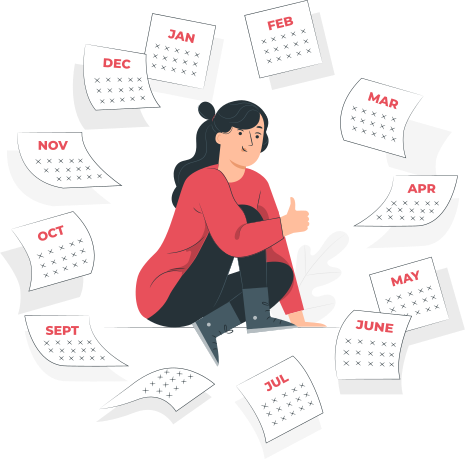Welcome back, fellow educators! It’s that time of the year when the school bells chime, signaling the end of those blissful vacation days and the return to the hustle and bustle of the classroom. As you greet your students after a much-needed break, it’s crucial to set the tone for an engaging and interconnected learning environment. One effective way to do this is by incorporating post-vacation icebreakers into your classroom routine. These icebreakers not only help students thaw out from their holiday slumber but also create a positive and welcoming atmosphere conducive to learning.
Reasons for Using Post-Vacation Icebreakers
After days spent with relatives or exploring new cities, students may feel a bit disconnected from their peers and from the school environment. Post-vacation icebreakers bridge this gap by nurturing friendship, engagement, and attentiveness.
When students reassemble in the classroom, it’s important to provide opportunities for open dialogue and peer connections. Icebreakers offer an avenue to share vacation experiences, which not only strengthens relationships by finding common ground, but also helps students increase their learning power. As they excitedly recall their adventures, they become more at ease, creating a more positive classroom environment.
Icebreaker Ideas for Post-Vacation Classroom Activities
Now that we understand the significance of these icebreakers, let’s dive into some interactive and enjoyable activities to kick-start those post-vacation vibes!
“Vacation Highlights” discussion:
A wonderful way to encourage sharing and active listening is by initiating a “Vacation Highlights” discussion. Each student takes a turn sharing their favourite moment from their vacation. They can describe memorable experiences, destinations, or even the people they met. This activity allows students to engage with one another and discover common interests.
“The Location Ball” guessing game:
Who doesn’t love a little mystery? In this guessing game, students take turns passing a ball and the student with the ball drops clues about their vacations, while others attempt to guess the locations. It encourages critical thinking, general knowledge, and a bit of friendly competition. Plus, it’s an exciting way to learn about different towns, cities, and countries!
“Snapshot Q&A”:
Bring out the orator in your students with “Snapshot Q&A.” Here, they each share a printed or digital picture from their vacation, and as each student presents their visual mementos, their classmates can ask questions about the photo, fostering interactive discussions, and further connecting with one another’s experiences.
“Email Pen Pals”:
Let your students unleash their creativity by becoming “Email Pen Pals.” Pair them up and have them write emails to one another, with you in CC, detailing their dream vacations or imaginary trips. This fun activity not only encourages communication but also boosts imaginative thinking and writing skills.
“Five Favourites”:
Sometimes, it’s challenging to encapsulate an entire vacation in words. So, why not let your students curate their top five vacation-related favourites on a sticky note and punch it onto the class board for everyone to read? Whether it’s listing their preferred local cuisine, activities, or hidden gems, students can articulate their choices and share them with the class. It’s a delightful and less time-consuming way to discover new destinations and interests!
“Travel Scribes”:
Put your students’ creative hats on with the “Travel Scribes” activity. Divide them into small groups and ask each team to pick one vacation spot out of the places all members have been to. Each team then writes an imaginative story or compelling travel guide about this destination. This collaborative activity encourages teamwork, research, and imaginative storytelling.
Tips for Implementing Post-Vacation Icebreakers
Now that you have some exciting icebreaker ideas in your repertoire, let’s cover a few tips to make these activities even more successful:
Provide a relaxed and non-judgmental environment:
Ensuring that your classroom is a safe space is one of the most essential 21-st century skills for an educator. Make sure that the students feel comfortable sharing their vacation experiences and encourage an inclusive and welcoming atmosphere where everyone’s stories are respected and appreciated.
Encourage active listening and respectful communication during discussions:
Emphasise the importance of active listening and engagement as students share their vacation highlights. Encourage classmates to ask questions, show interest, and respond respectfully to foster meaningful connections.
Incorporate icebreakers into regular classroom routines:
To maximise the effectiveness of post-vacation icebreakers, consider incorporating them into your regular classroom routines. By making these activities a consistent part of your lessons, you can maintain this positive classroom environment and encourage ongoing peer connections.
Adapt activities based on student grade level and cultural sensitivities:
Always consider the age and cultural background of your students when selecting icebreaker activities. Ensure the activities are both developmentally appropriate and culturally sensitive. Moreover, be aware of any potential allergies or dietary restrictions when incorporating food-related activities.
Conclusion
As we embark on a new semester after vacations, it’s essential to ensure that our students feel welcomed and connected. Post-vacation icebreakers provide a valuable gateway for students to share their experiences, build relationships, and reengage with their studies. Incorporate these future-ready activities into your classroom routine, and watch as your students thaw out and discover the joy of learning together!
Find more teacher resources like this at Zamit!


